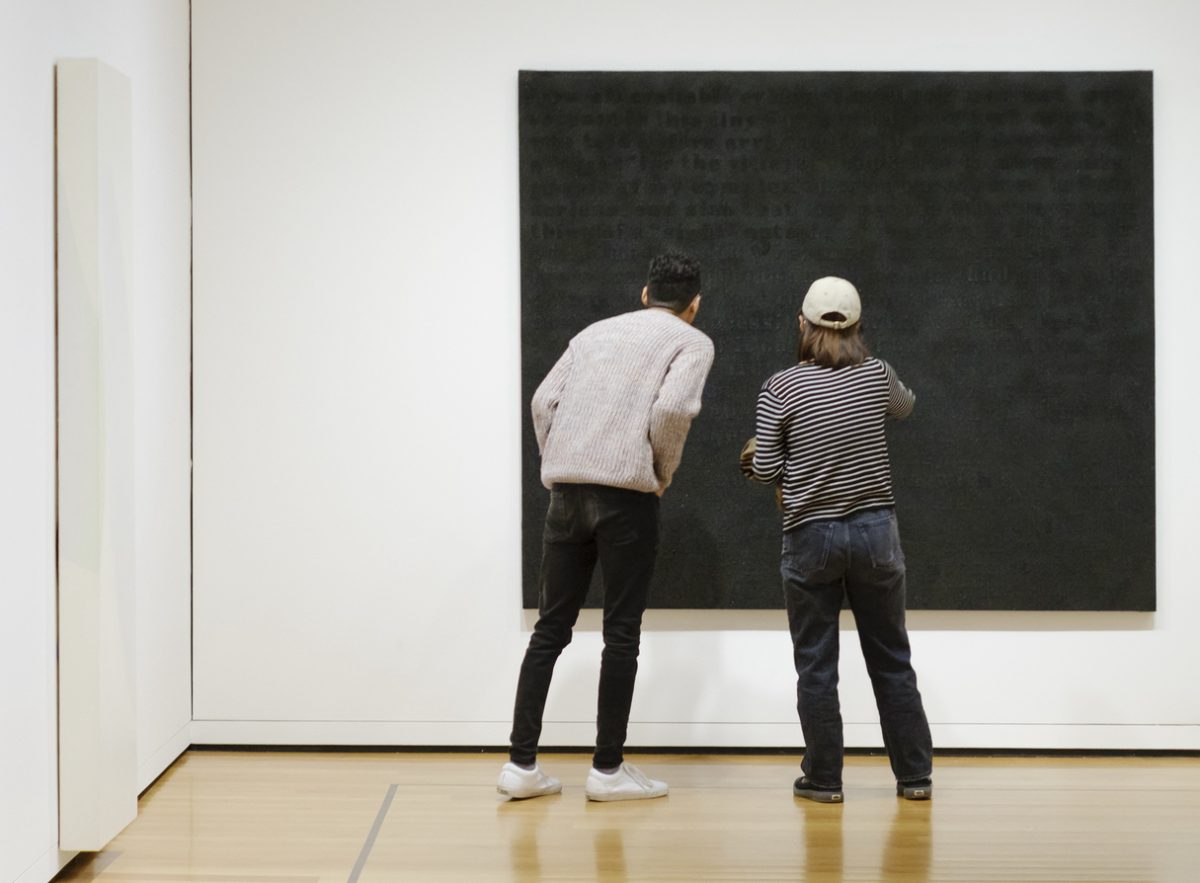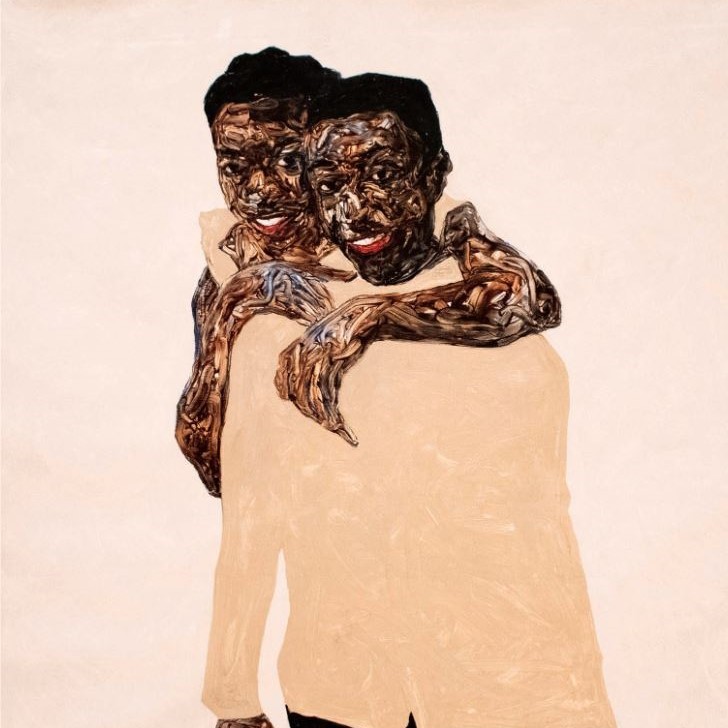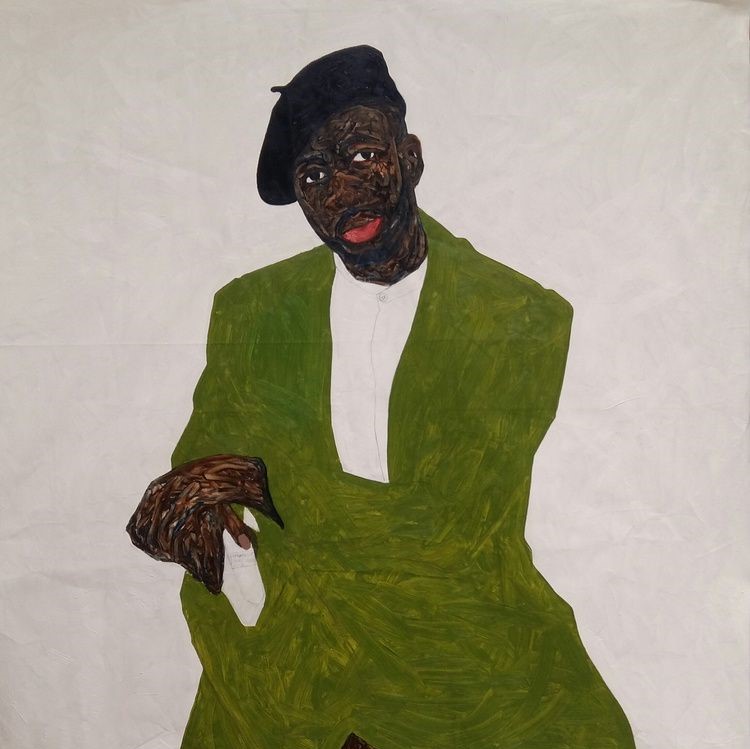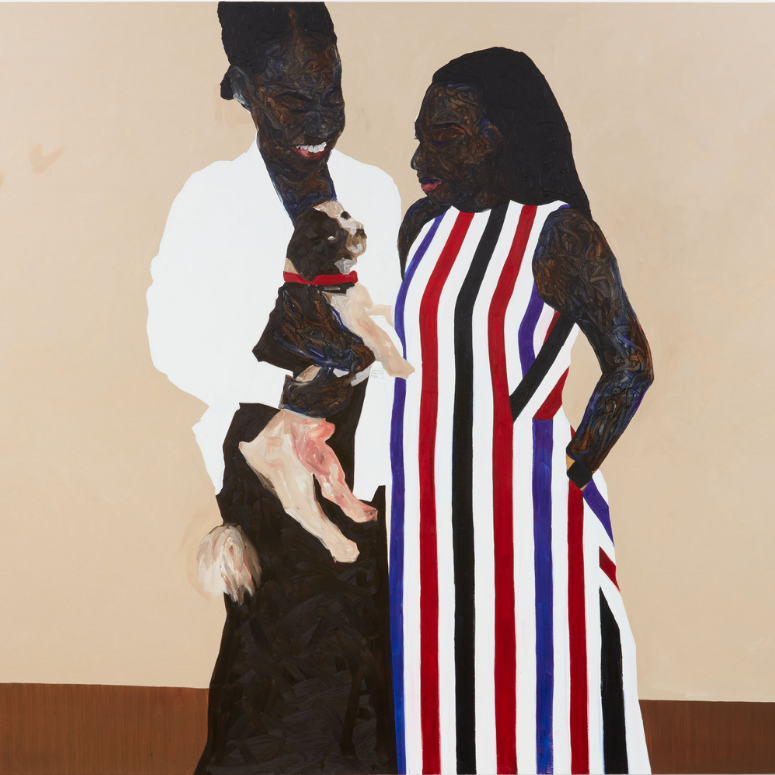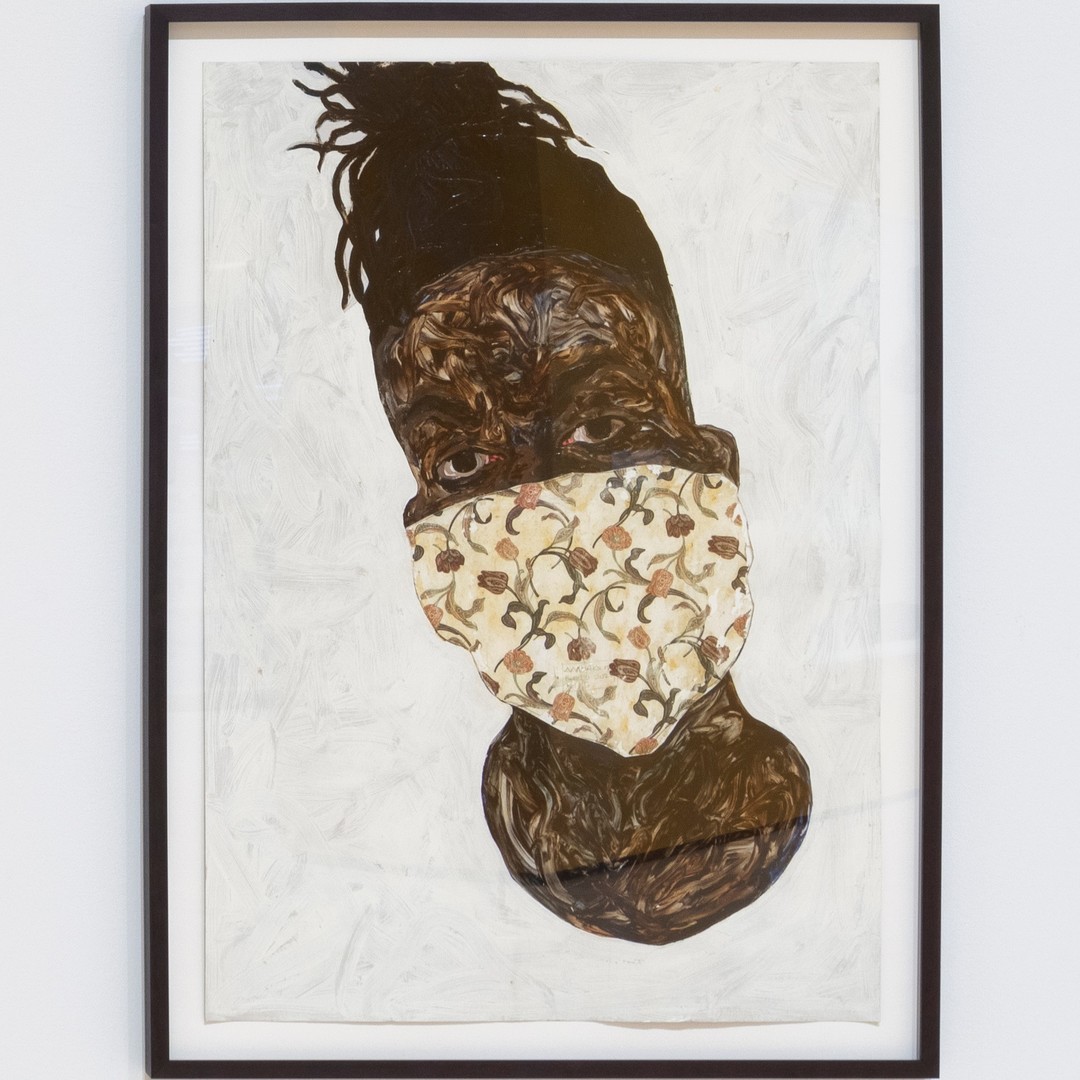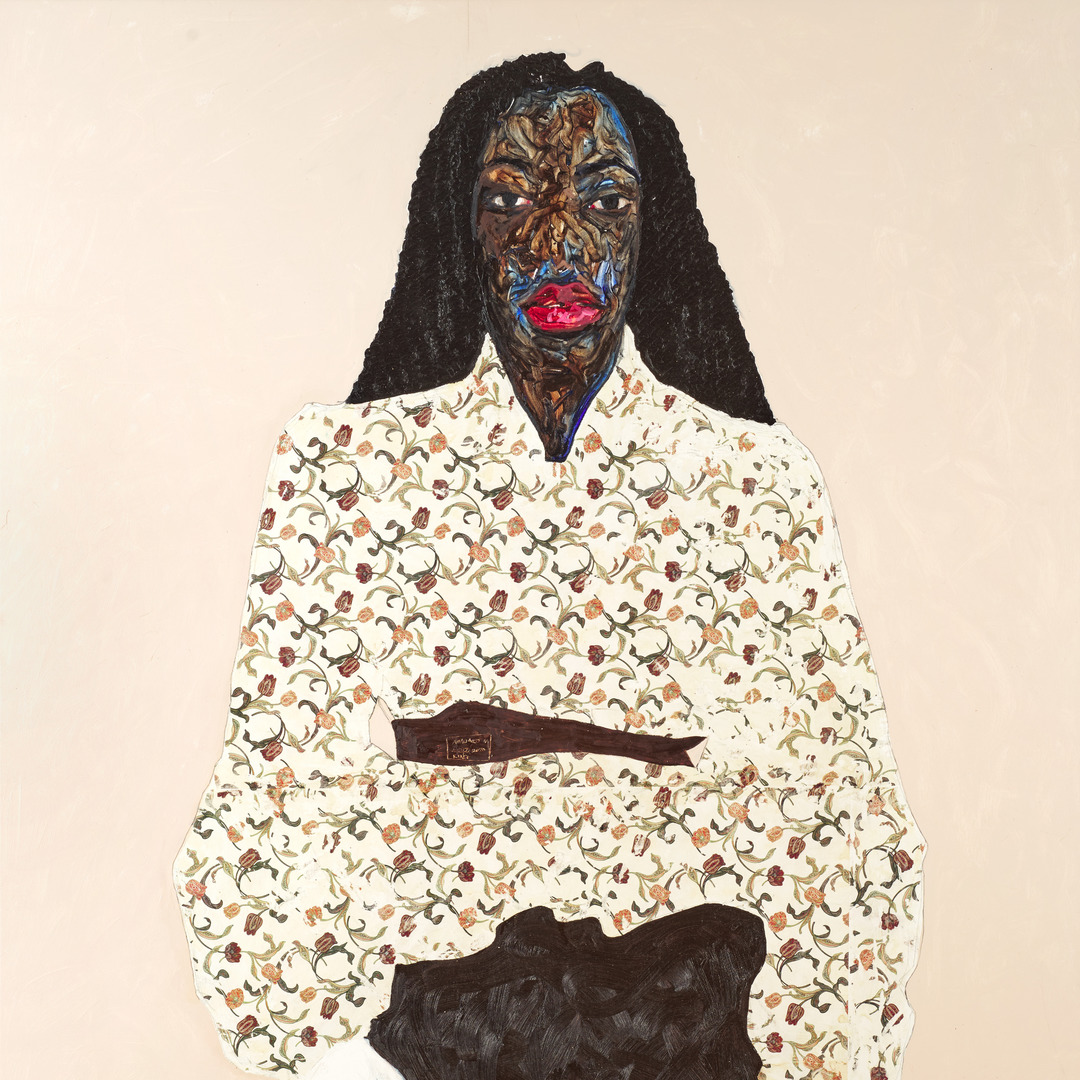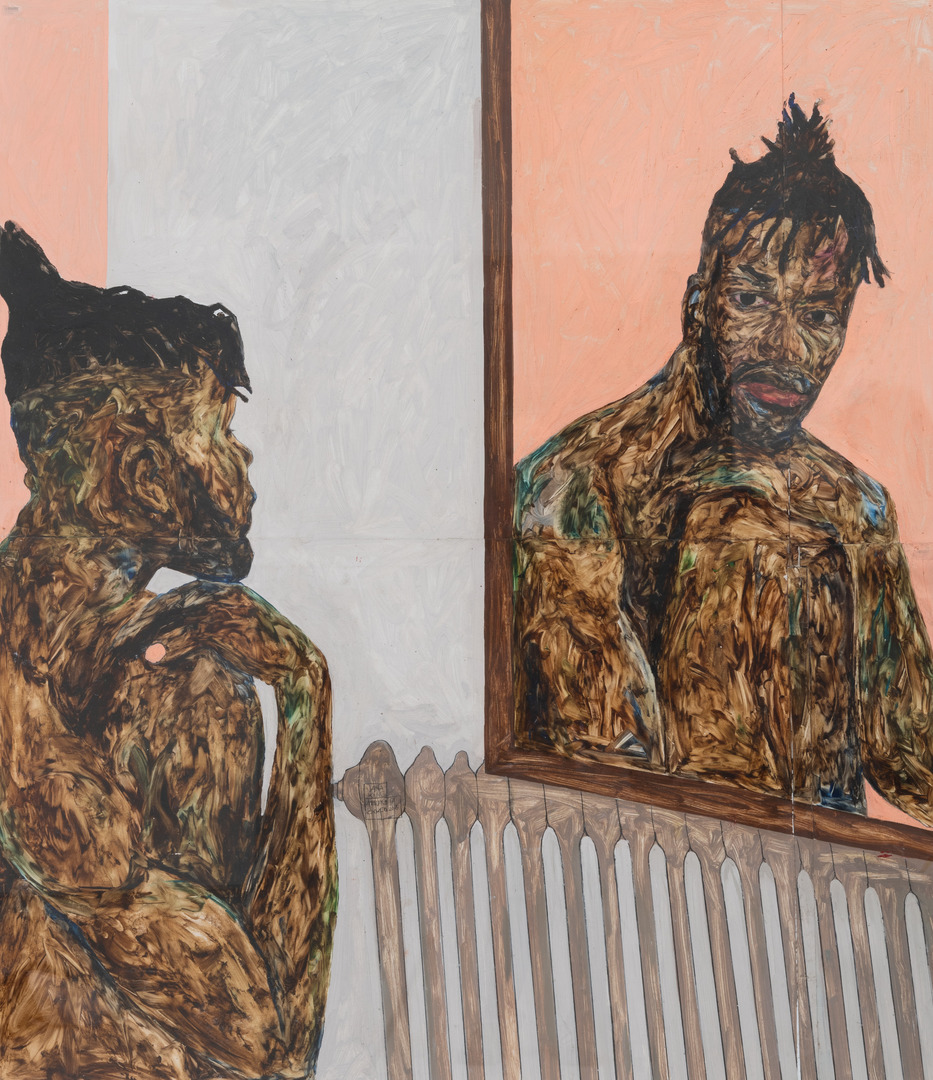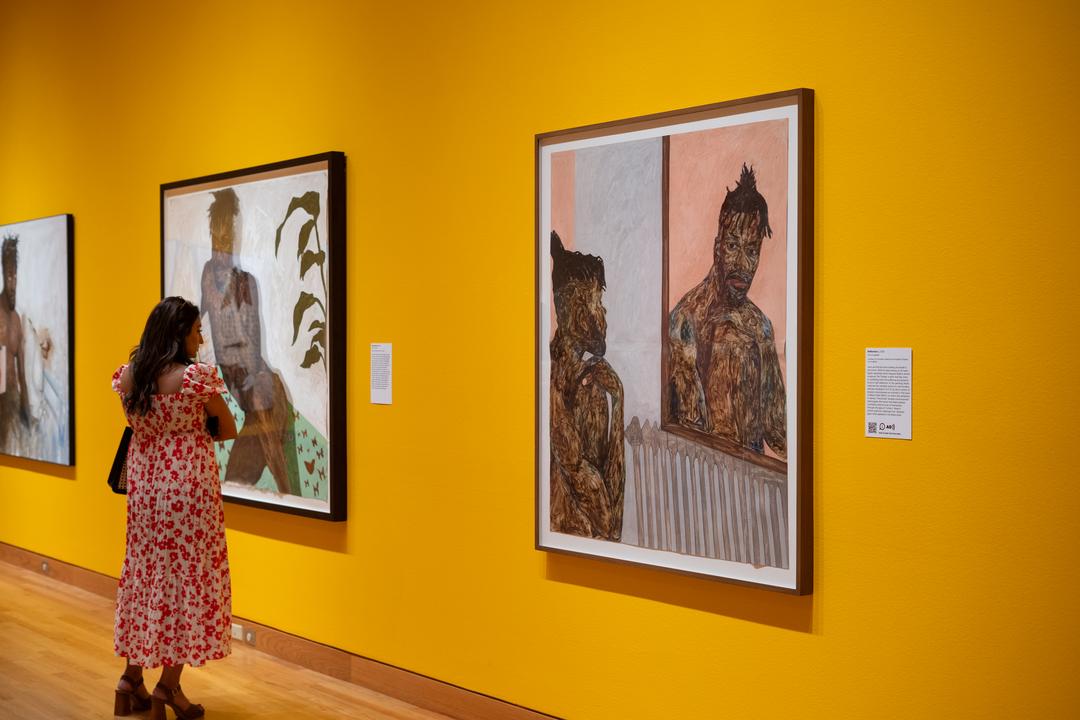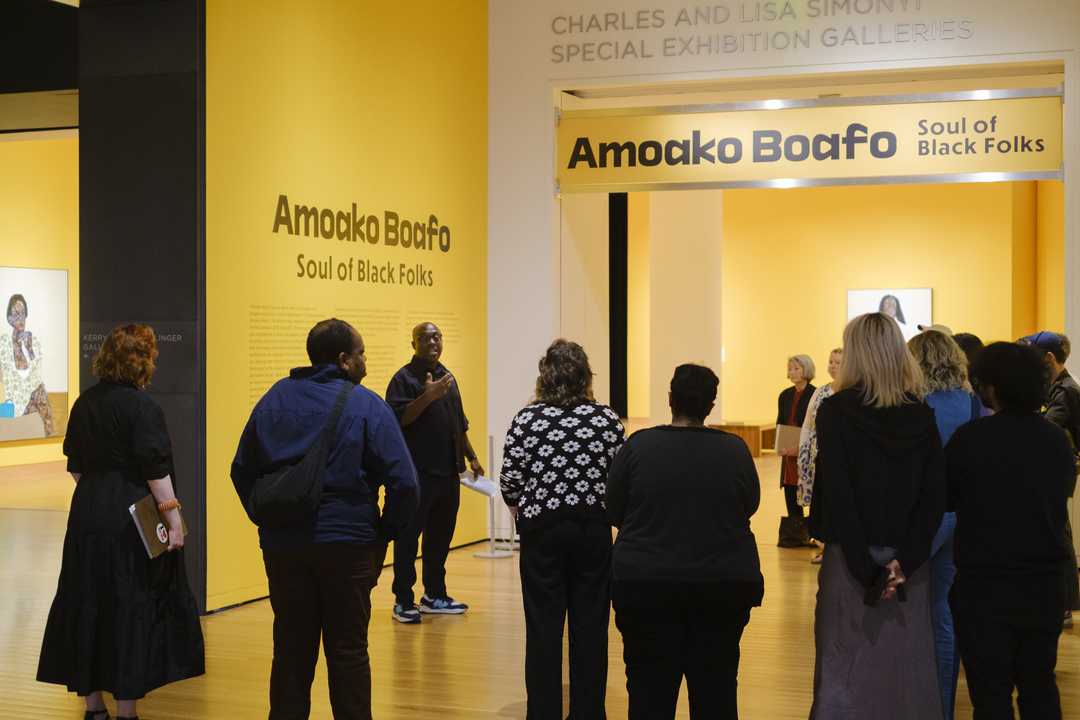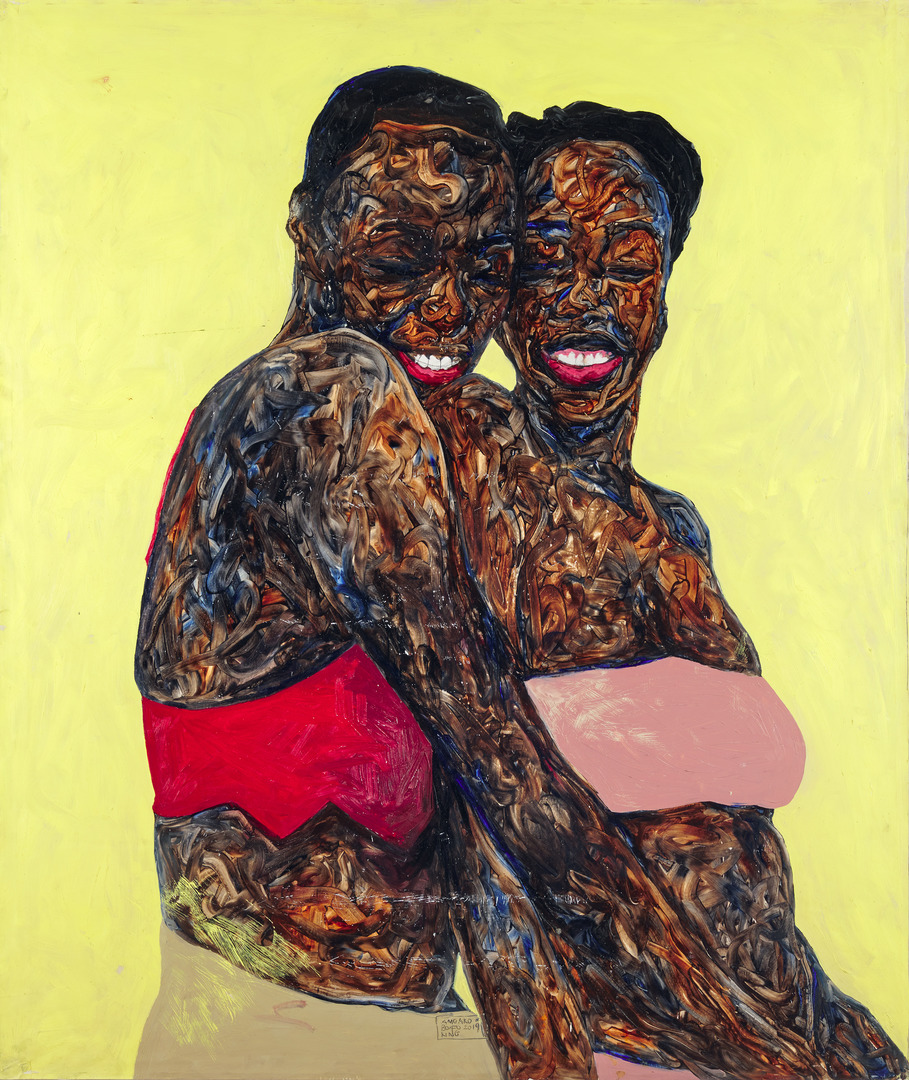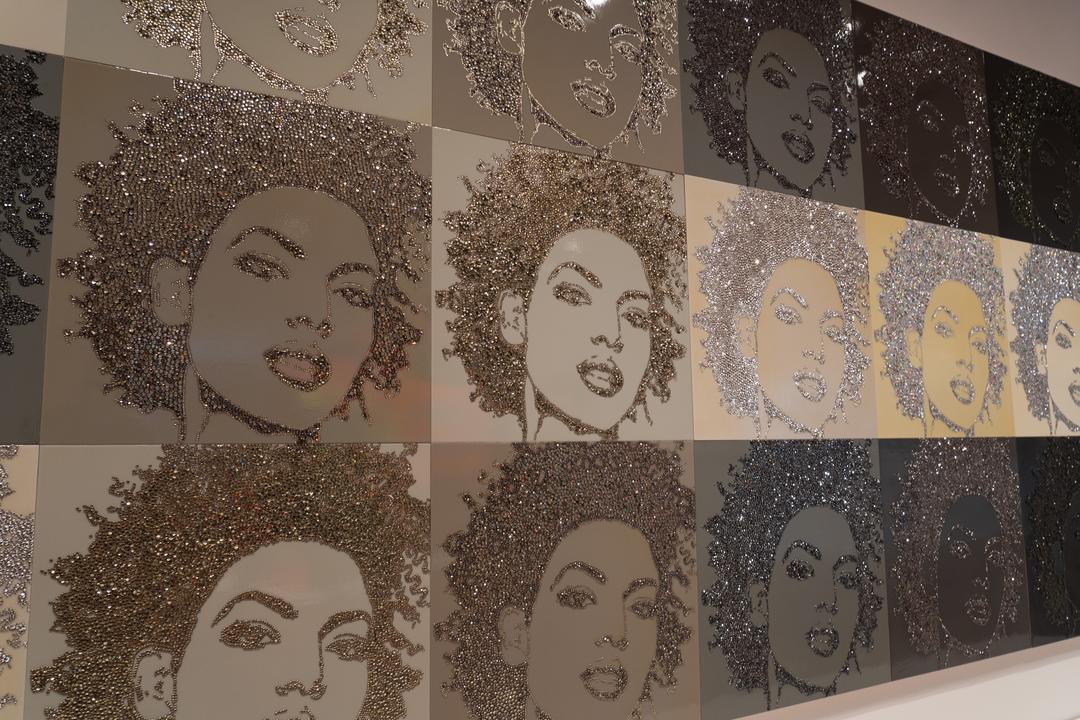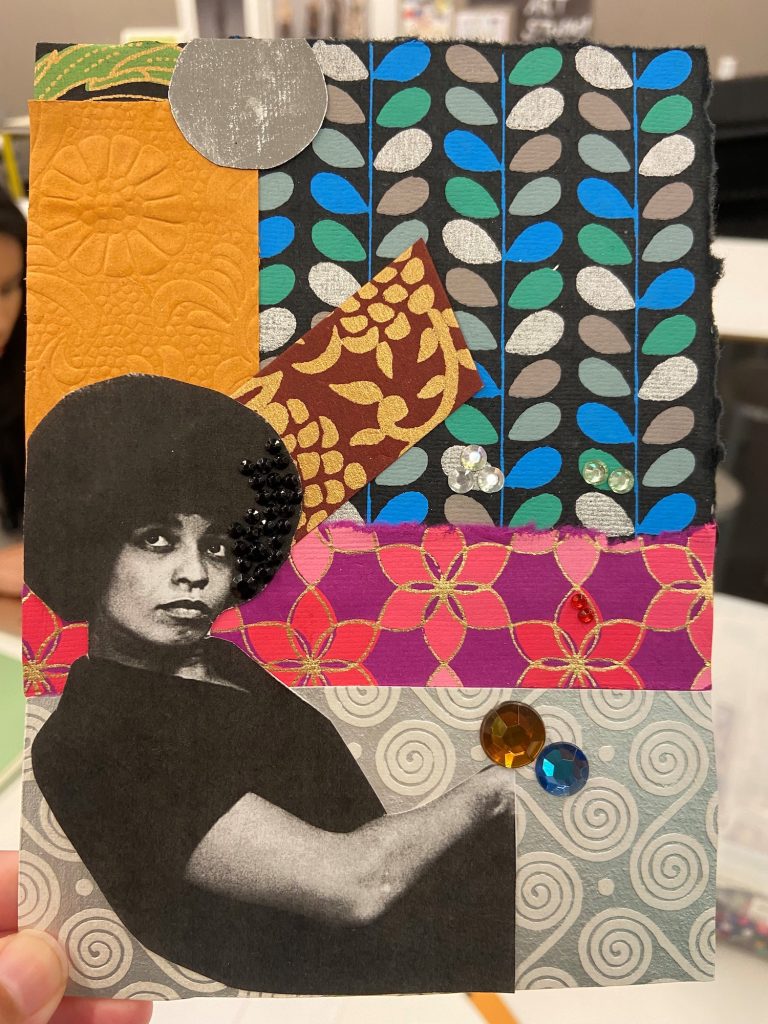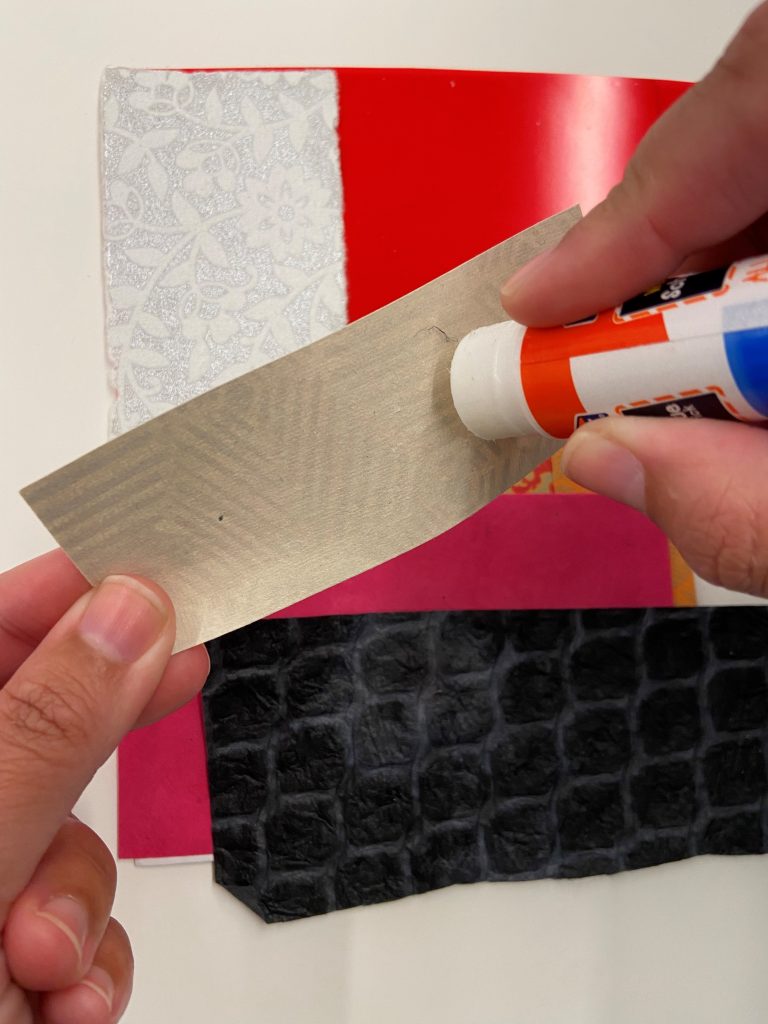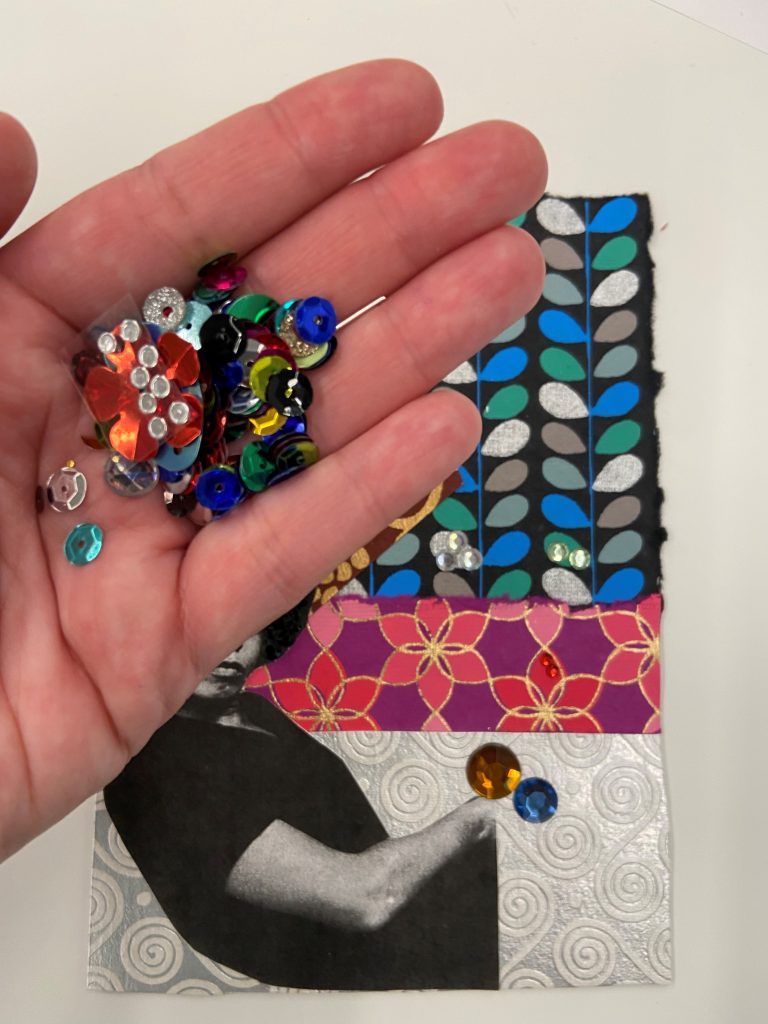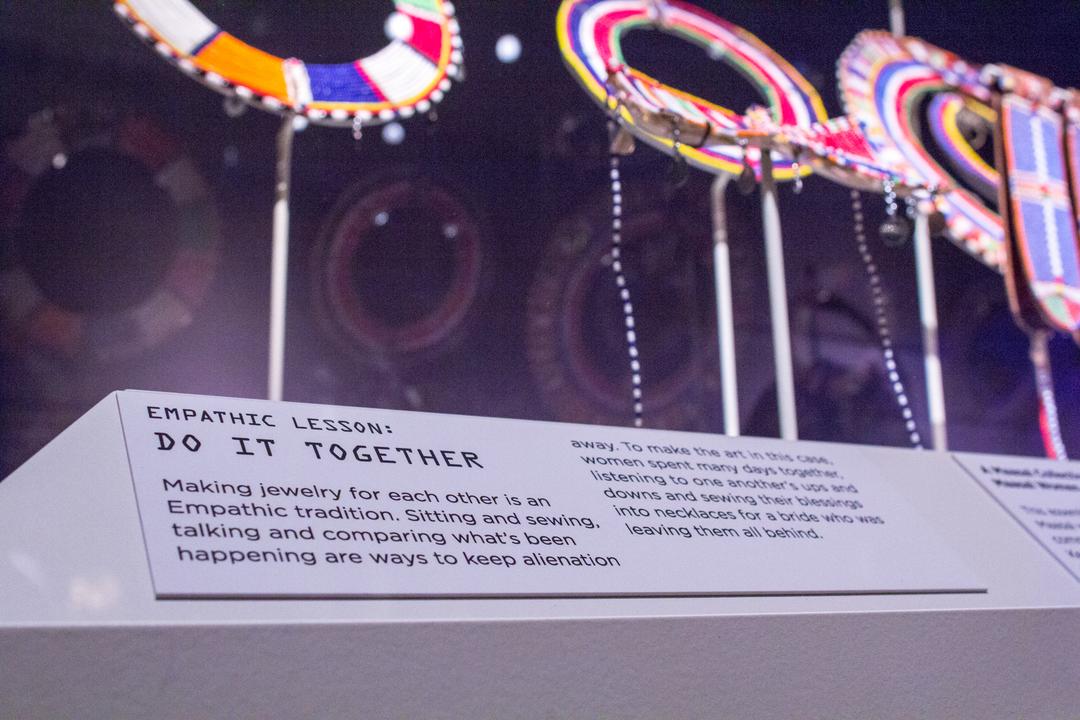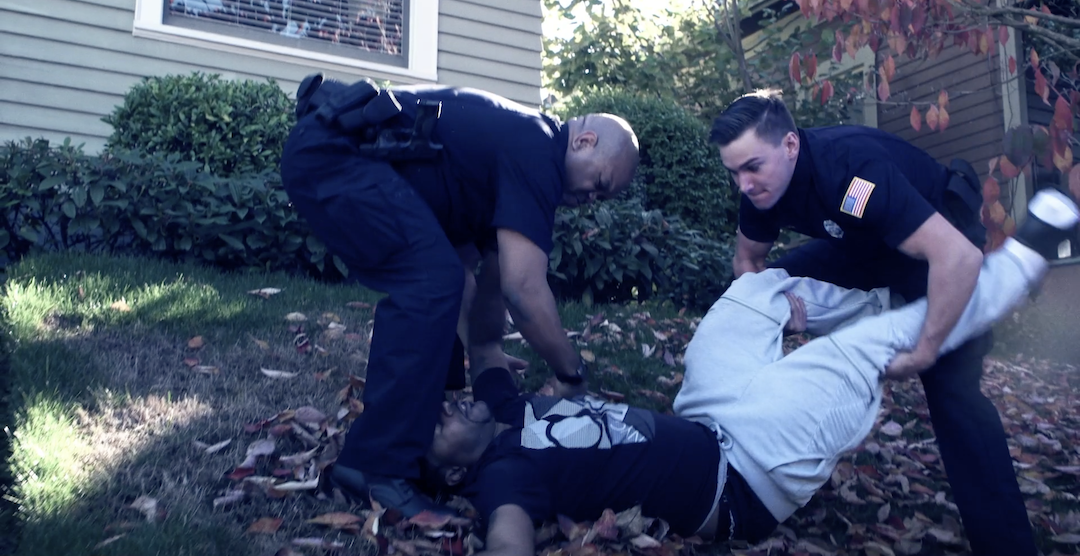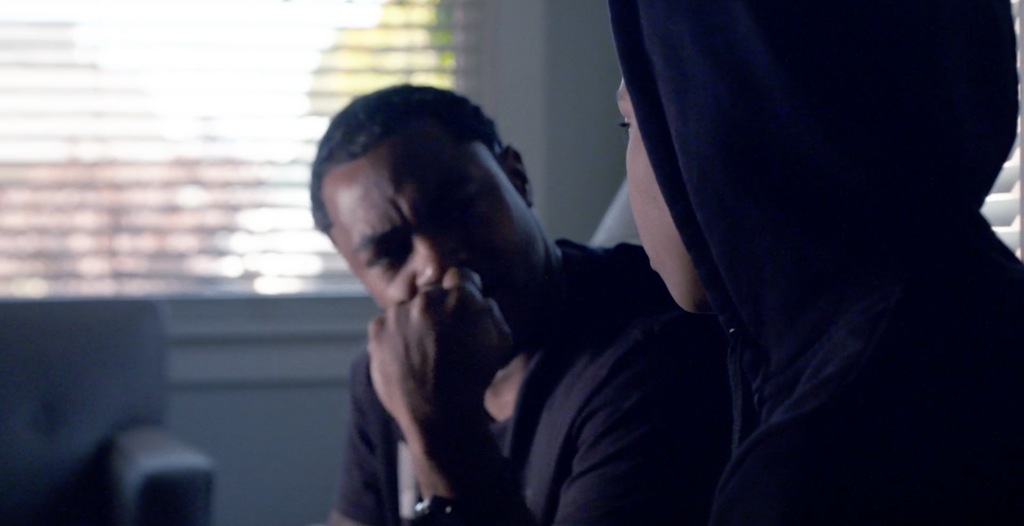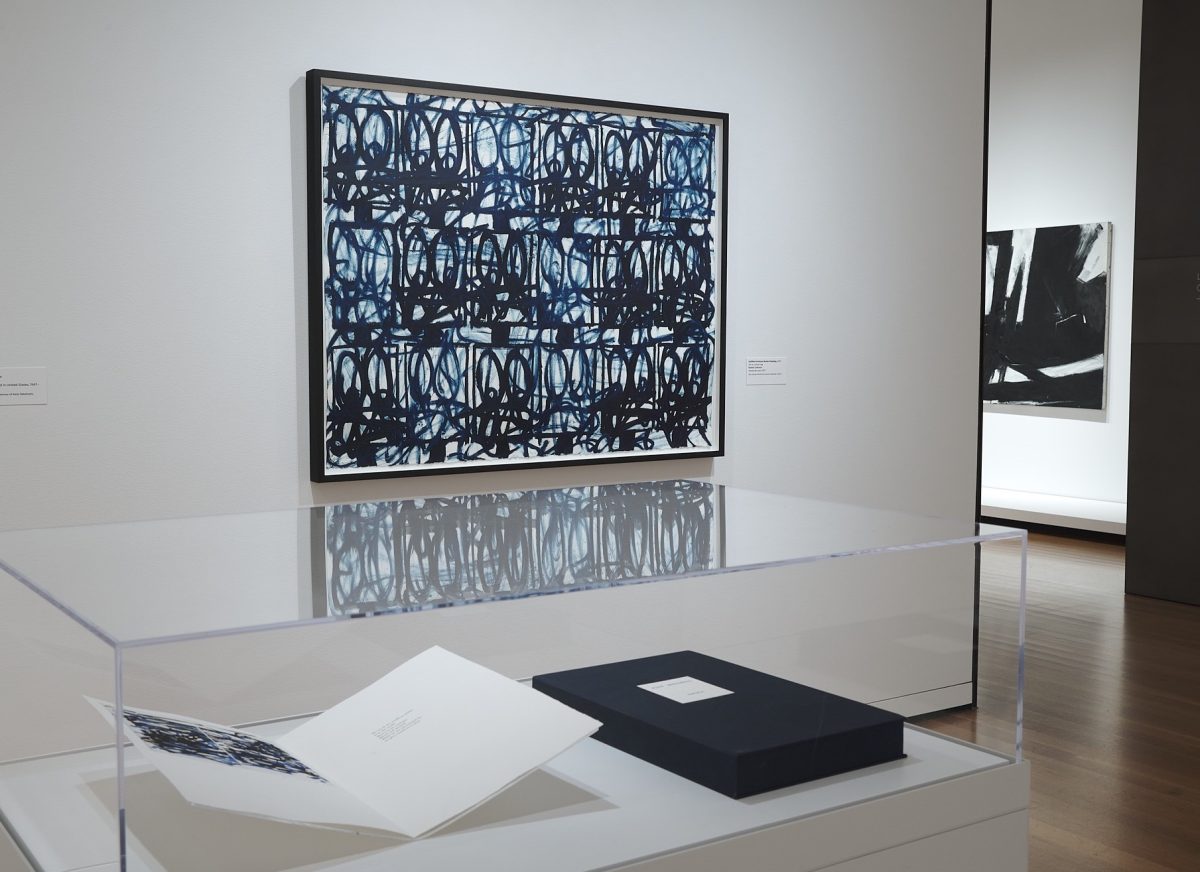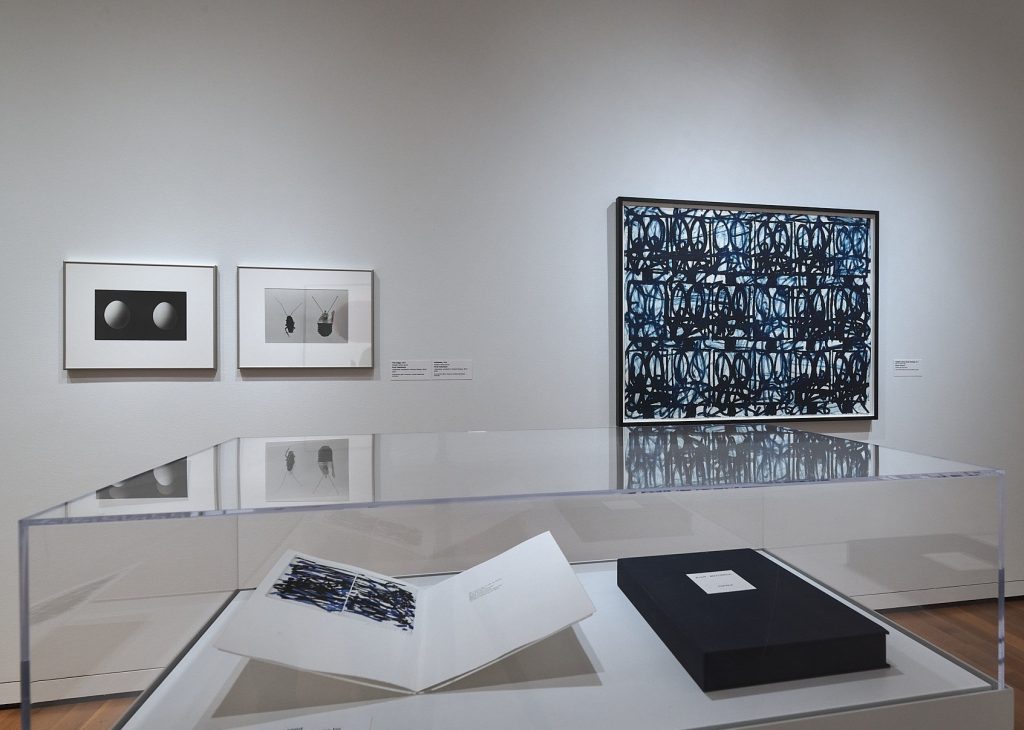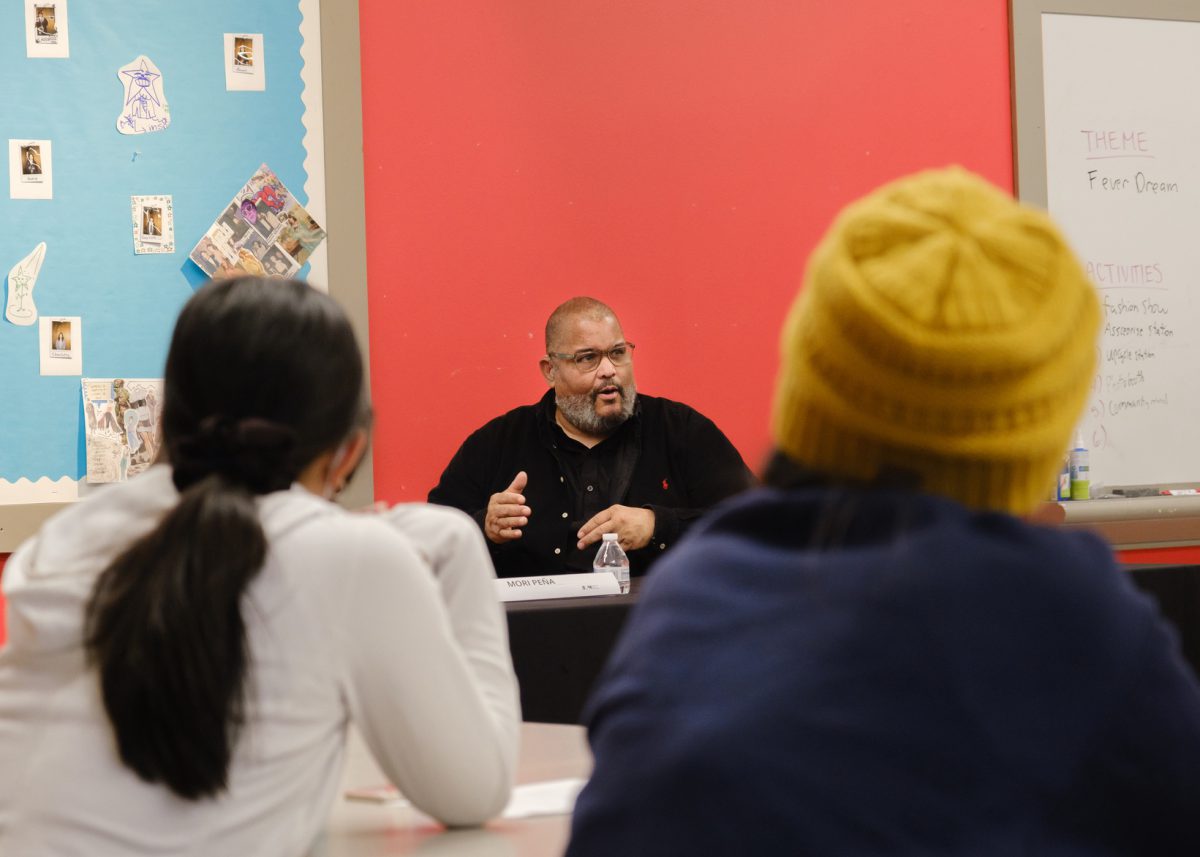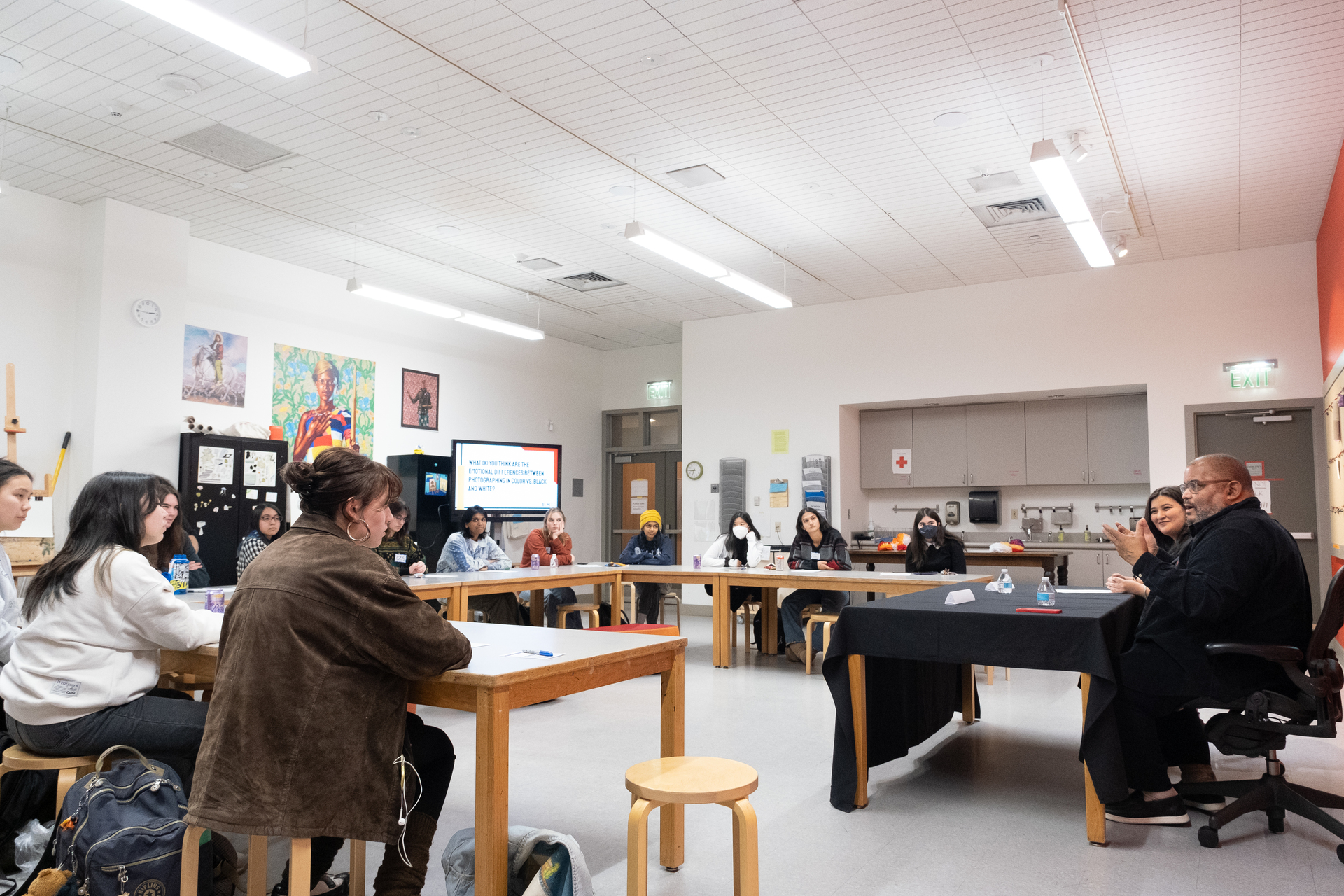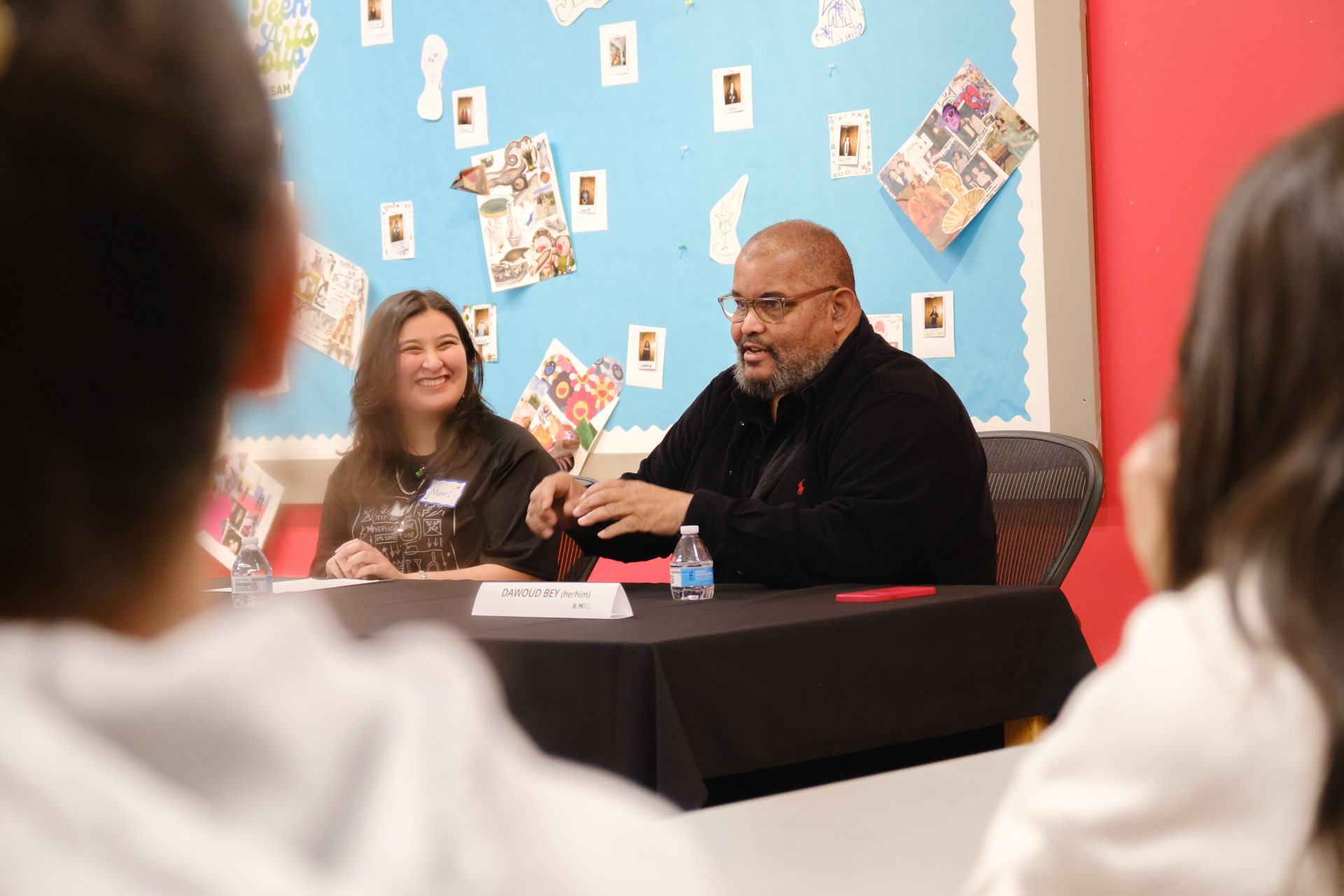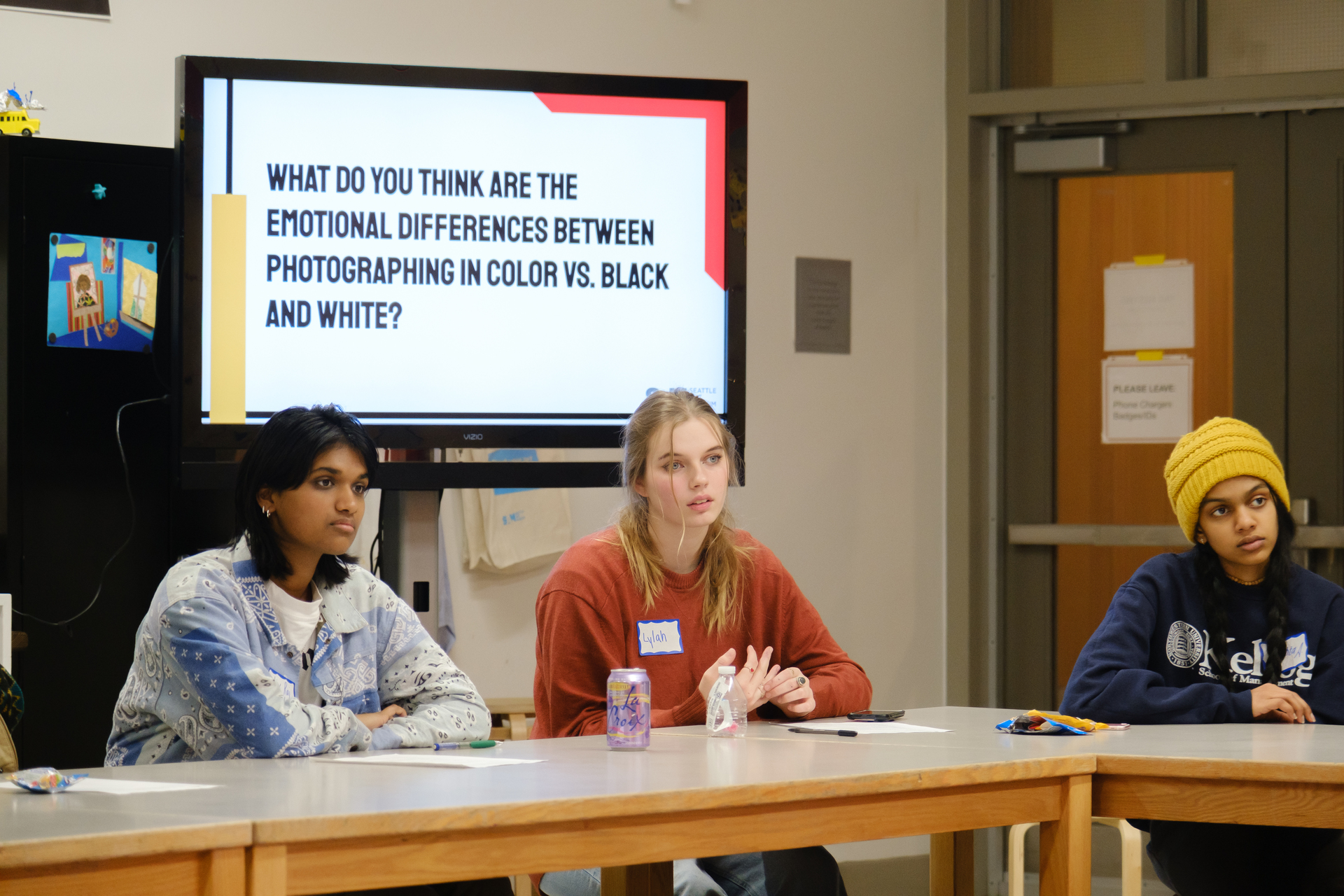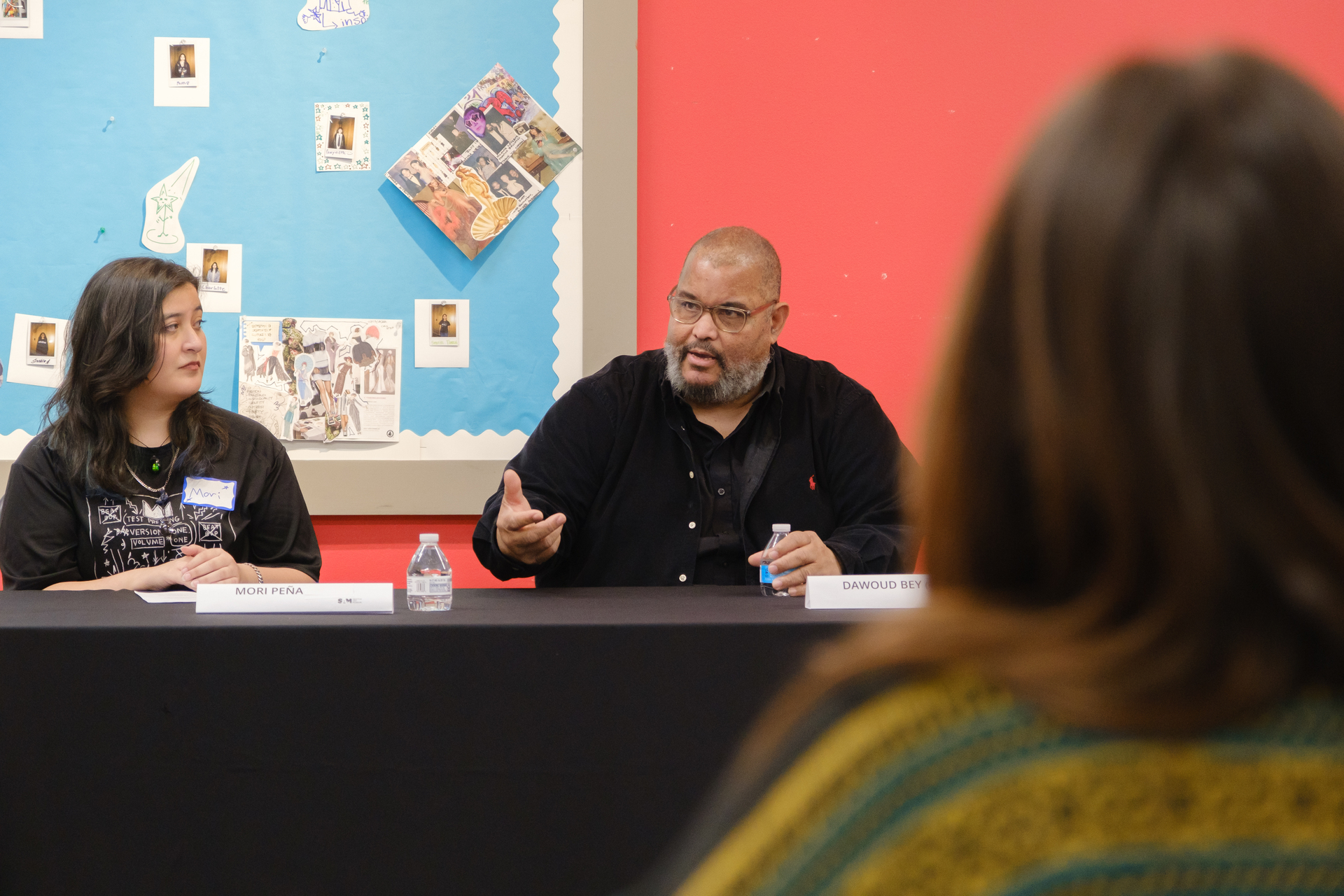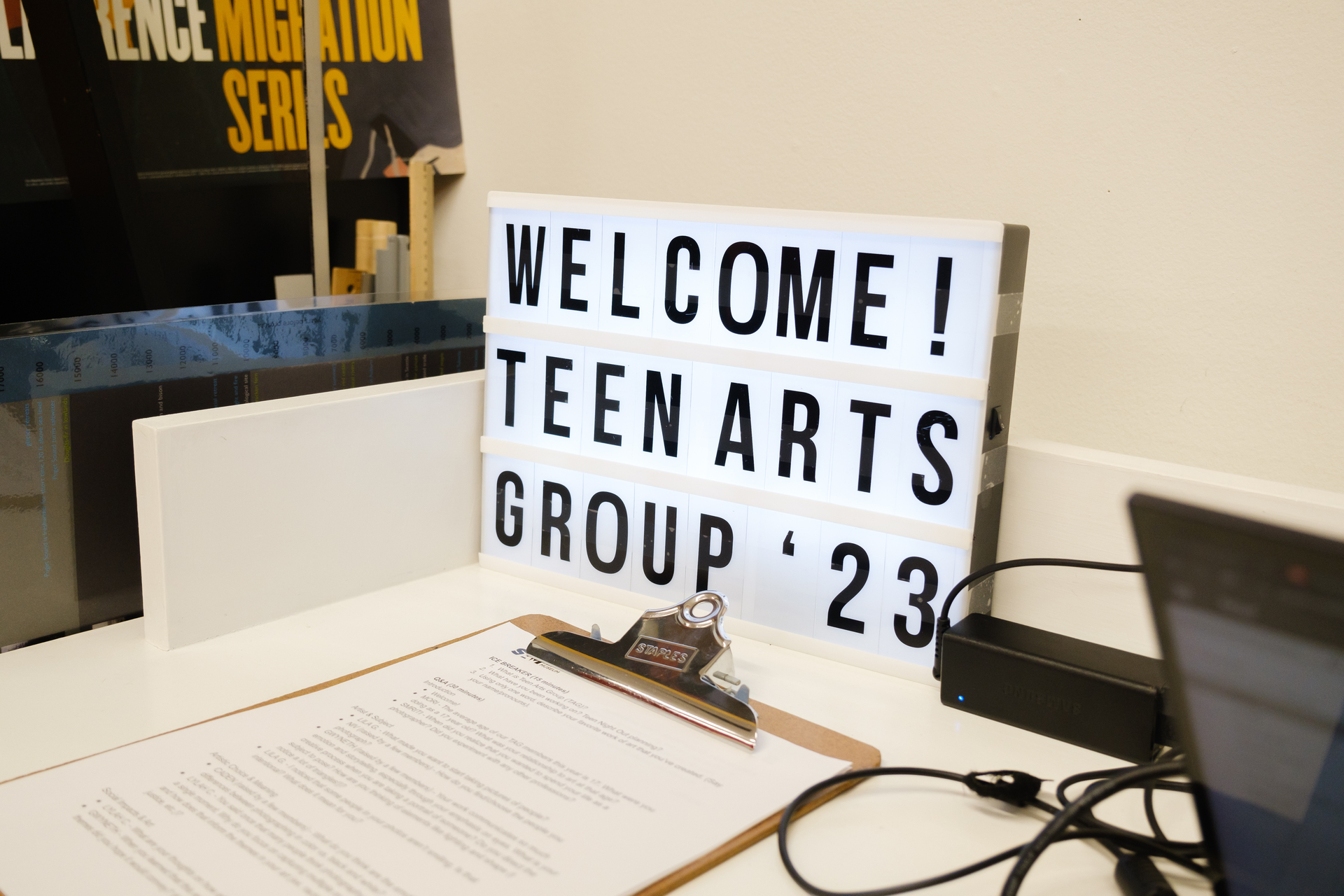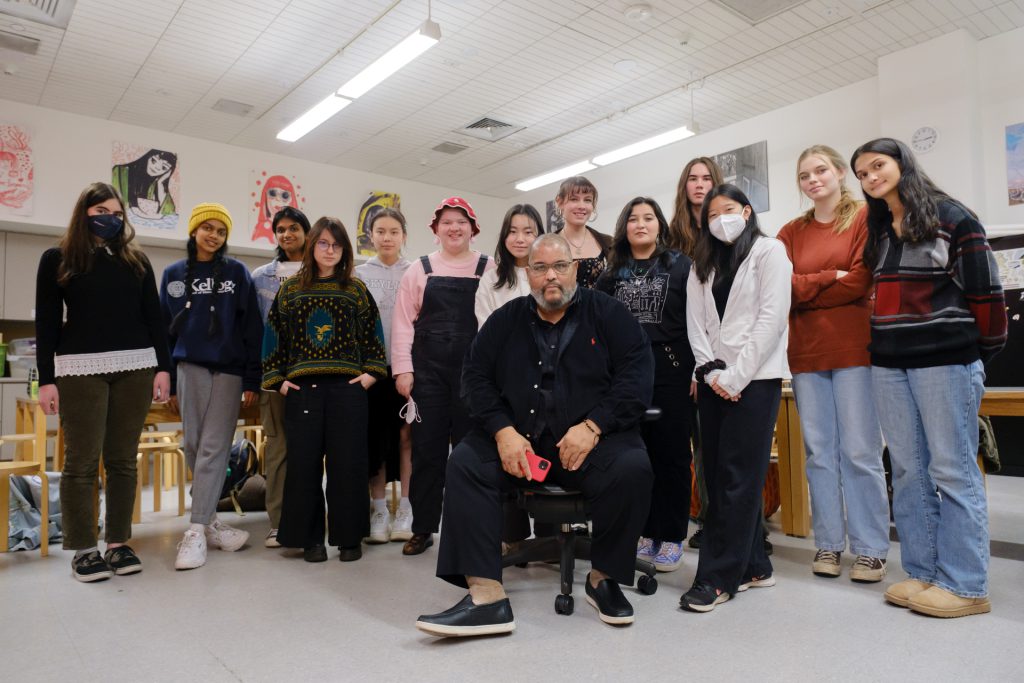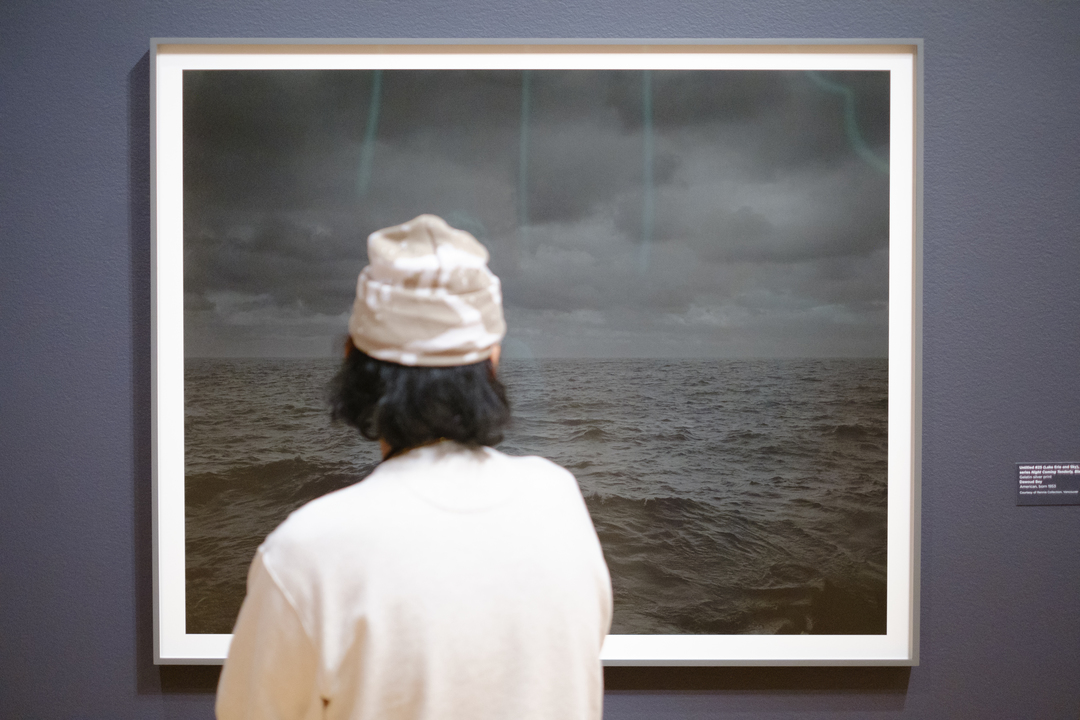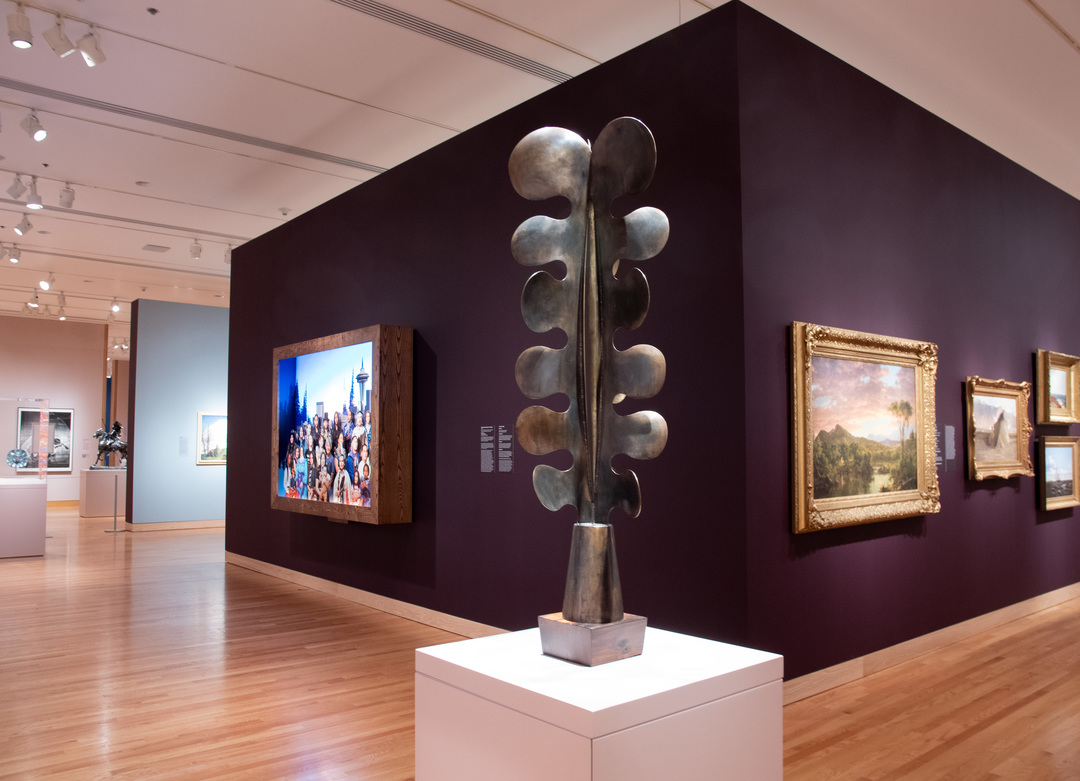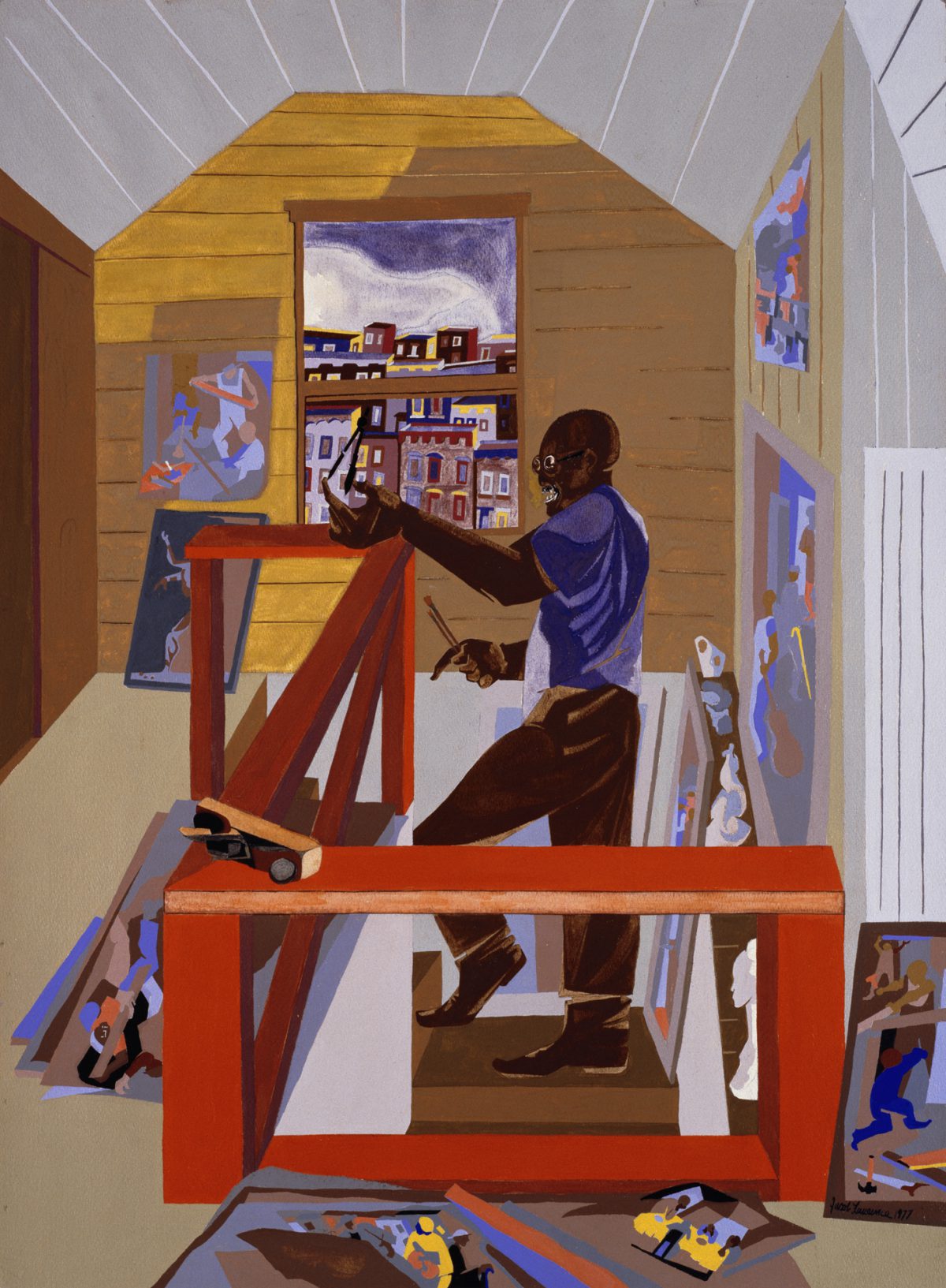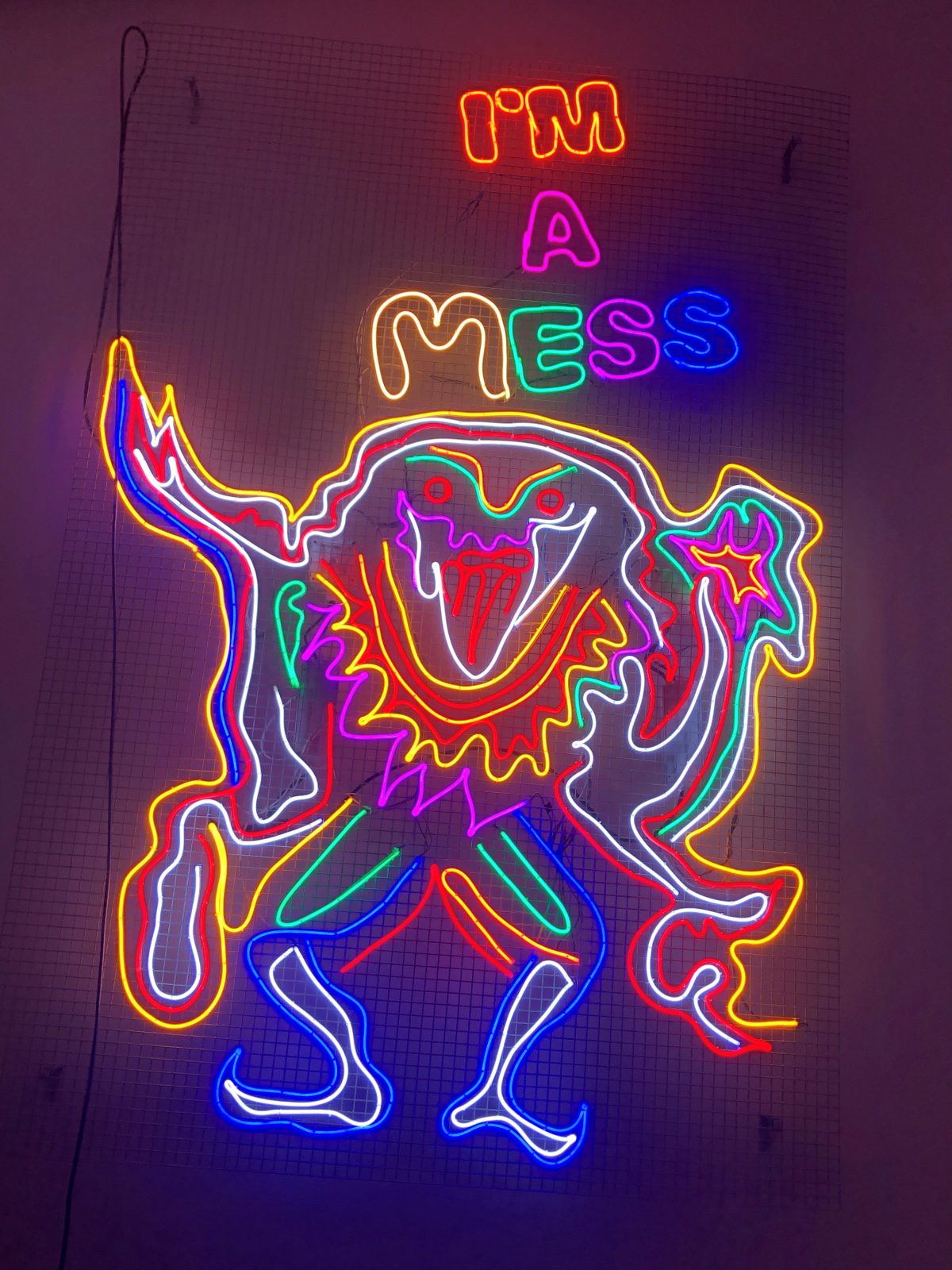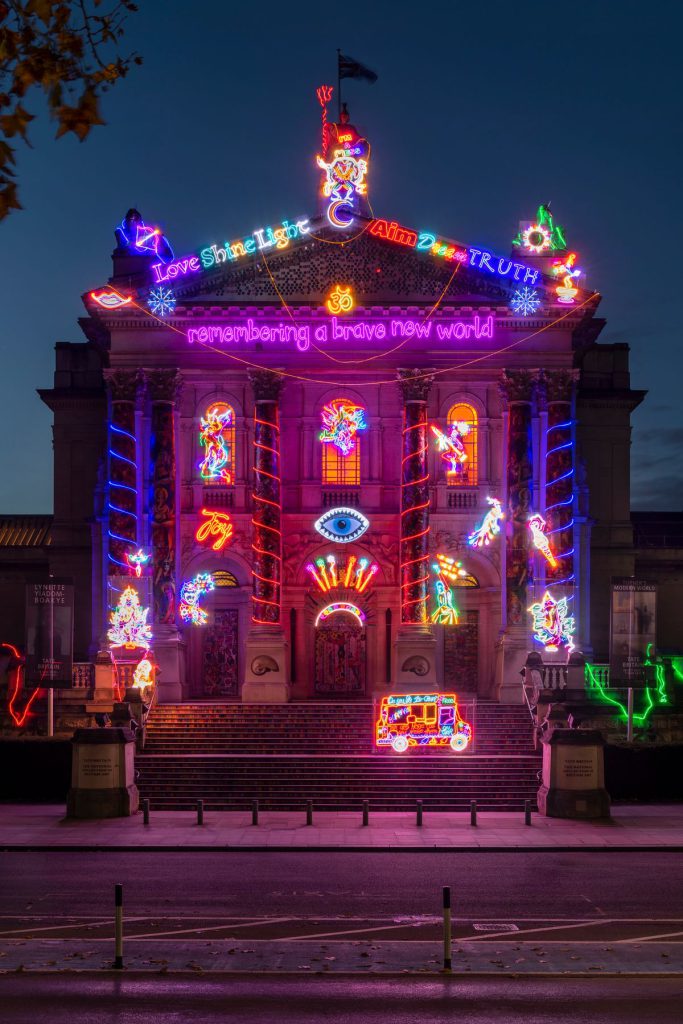Celebrate Black History Month With Five Artworks by Black Artists on View at SAM
Every February, the United States recognizes Black History Month with a specific theme. In 2024, the theme is African Americans and the Arts.
African American art is intricately woven with influences from Africa, the Caribbean, and the lived experiences of Black Americans. In celebration of the rich history of Black Americans in the arts, we’re reflecting on five artworks by historical and contemporary Black artists in the museum’s collection which visitors can currently see in our galleries. Plus, scroll to the bottom of this post to learn about a few ways you can celebrate Black History Month this February and all year long!
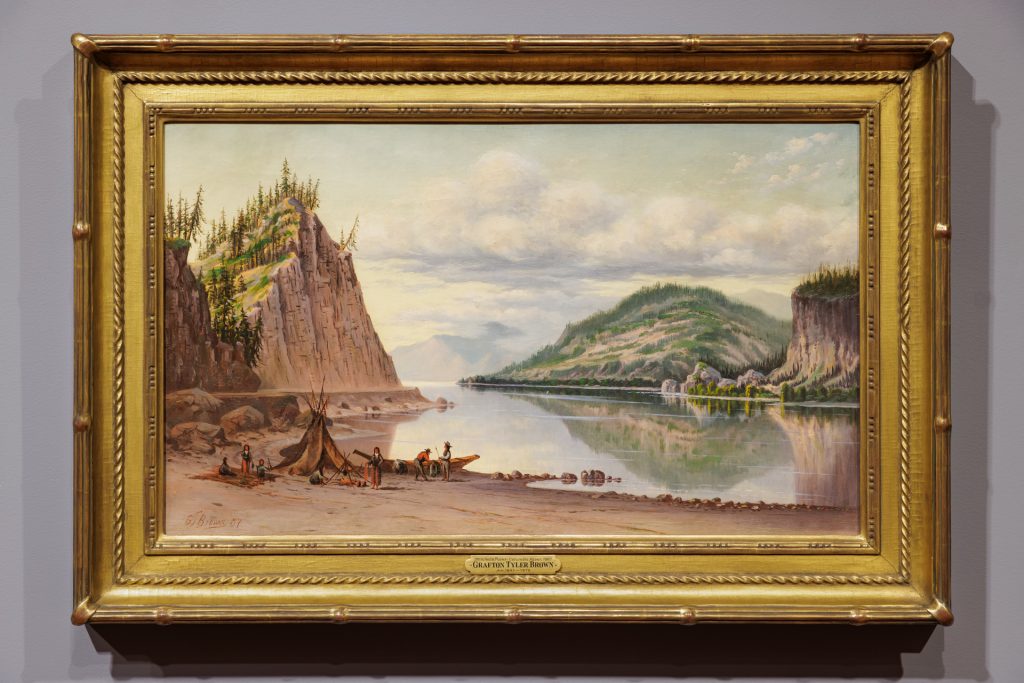
Mitchell’s Point Looking Down the Columbia, 1887
Grafton Tyler Brown
Grafton Tyler Brown (1841–1918) was one of only a few Black Americans who made a living as an artist before the 20th century, first as a topographic artist and a lithographer and later as a landscape painter. Brown’s parents were freedmen living in Pennsylvania, but Brown decided to move West for greater freedom and opportunities in the 1850s, as many African Americans did. In the 1880s and 1890s, Brown traveled around the Pacific Northwest and British Columbia, painting and selling images of his surroundings. This serene scene of the Columbia River, titled Mitchell’s Point Looking Down the Columbia and on view in American Art: The Stories We Carry, depicts smooth, reflective water framed by rocky cliffs, rolling hills with patches of trees, and distant mountains. The few Native American figures situated in the foreground serve more as indications of the remote-ness of this place, rather than detailed observations of particular Indigenous peoples.
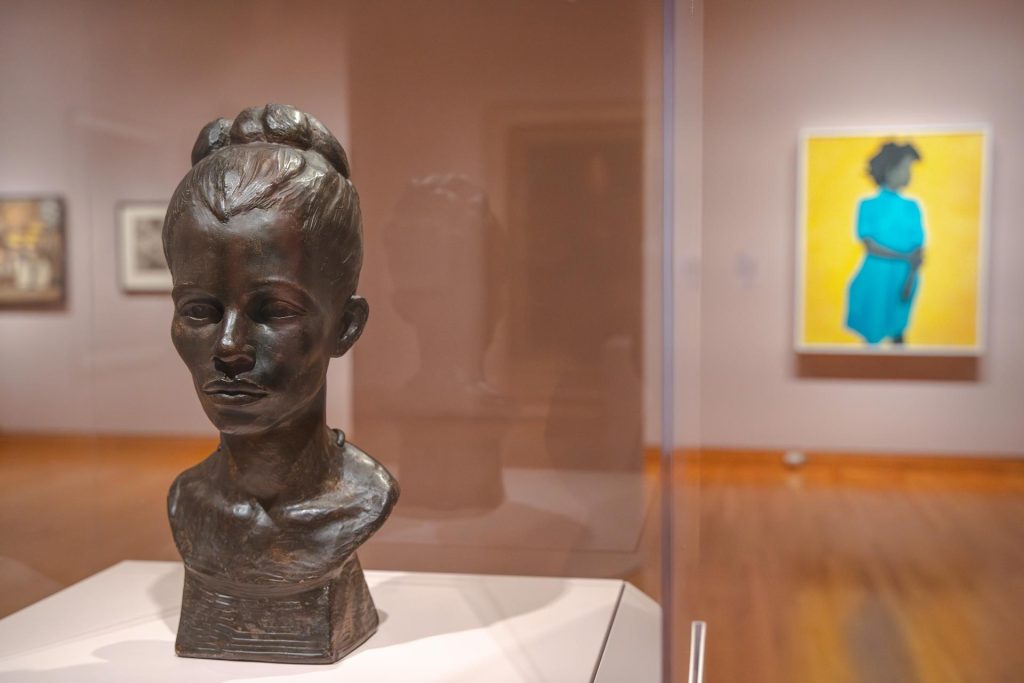
Gwendolyn Knight, 1934–35
Augusta Savage
Augusta Savage (1892–1962) studied sculpture in New York and Paris before opening her own art school in Harlem, New York in 1931. She was devoted to sharing her skills and resources with her students and mentored many young Black artists including Gwendolyn Knight, depicted here, and Knight’s husband Jacob Lawrence, both of whom would later live in Seattle. This portrait depicts Knight in her early twenties with careful attention paid to her facial features and gracefully pulled up hair. Savage gifted this portrait bust to Knight, which she kept until her death in 2005 and bequeathed to the Seattle Art Museum, allowing this rare and fragile plaster work to survive while many of Savage’s other works did not. You can learn more about this bust and Augusta Savage’s artistic career in this 2016 SAM Object of the Week blog post and take an up-close look at its intricate sculpted details in American Art: The Stories We Carry.

Wounded Eagle No. 10, 1963
James Washington Jr.
James Washington Jr. (1908–2000) saw his animal sculptures as deeply symbolic and resonant with his spiritual beliefs. Born the son of a Baptist minister in Mississippi, he brought these beliefs with him when he moved to the Seattle area in 1941 for a job at the Bremerton Navy Yard. He felt that God was guiding him in his life and as an artist, calling him to create images that would communicate universality and truth about the world. His animal sculptures, such as Wounded Eagle No. 10 on view in Remember the Rain, showcase his close observations of the natural world, as well as his understanding of line, form, and medium. Washington was active in the arts community in the Northwest, taking classes at the University of Washington, exhibiting his work often, forming relationships with artists including Mark Tobey, Kenjiro Nomura, and George Tsutakawa, among many others, and starting a foundation for art scholarships.
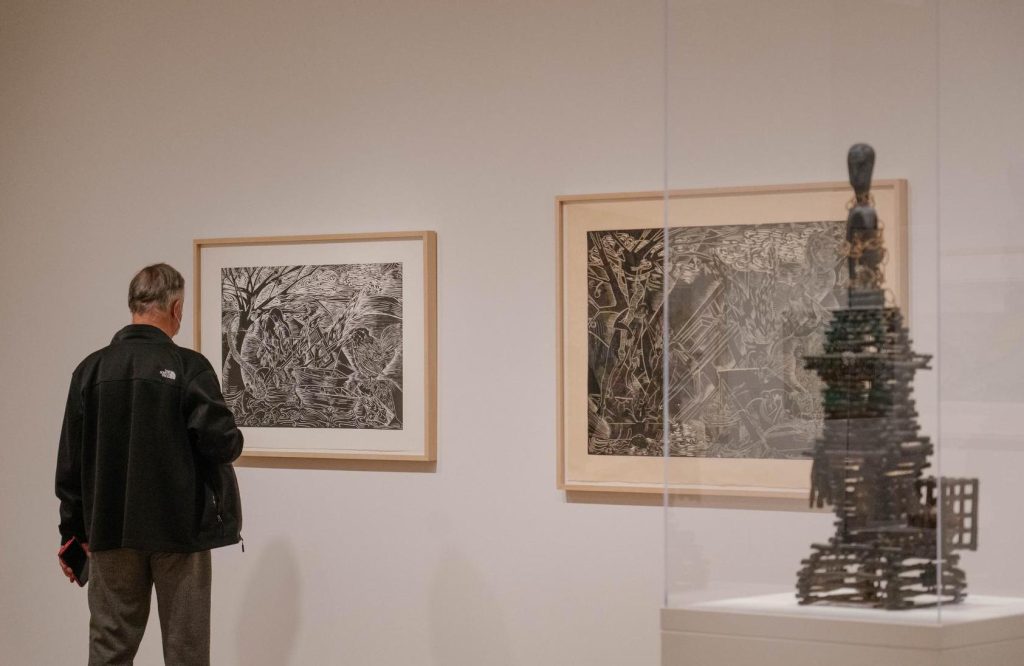
In Case of Fire and In Case of Flood, 2014
Barbara Earl Thomas
In a striking and jarring confusion of black and white lines, Seattle-based artist Barbara Earl Thomas (born 1948) illustrates two related themes in this pair of linocut prints titled In Case of Fire and In Case of Flood on view in Remember the Rain. These scenes of people dealing with apocalyptic disasters—fire and flood—draw from Biblical sources, but also from folklore, literature, and Thomas’s own family history and experiences. Rather than creating scenes of pure fantasy, Thomas describes her work as chronicling real narratives from the past and our present day, compelled by the economic and racial inequity she witnesses. In a 2019 SAM Object of the Week blog post, Thomas was quoted as saying: “It is the chaos of living and the grief of our time that compels me, philosophically, emotionally, and artistically. I am a witness and a chronicler: I create stories from the apocalypse we live in now and narrate how life goes on in the midst of the chaos.” Thomas was a student of Jacob Lawrence at the University of Washington, who himself was taught by Augusta Savage, exemplifying a legacy of socially engaged and community-oriented artists.
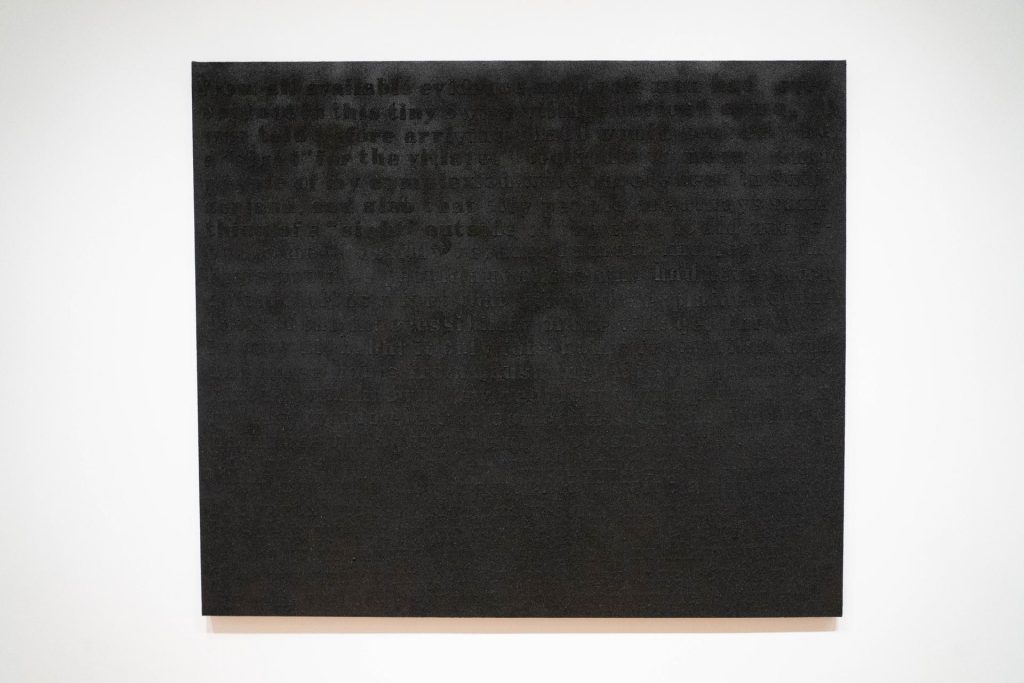
Stranger in the Village (Excerpt), #7, 1997
Glenn Ligon
Glenn Ligon’s (born 1960) Stranger in the Village (Excerpt), #7 renders a powerful text by civil rights activist and writer James Baldwin nearly invisible by stenciling the black type on a black background and coating it with coal dust. On view in SAM’s modern and contemporary art galleries, the work’s unclear presentation of Baldwin’s words leaves viewers searching and straining to read the message. Baldwin’s essay published in 1955 recounts his visit to a remote Swiss village where he is the first and only Black person that many of the townspeople had ever met. In Ligon’s painting, the sense of hypervisibility that Baldwin describes becomes camouflaged and concealed. Ligon often uses text in his works to question the power of language, modes of engaging with visual art, and the legacy of slavery and racial stereotypes.
– Nicole Block, SAM Collections Associate
Celebrate Black History Month in Seattle with these suggested events.
February 1–29
Call to Conscience
Take a trip to the Columbia City Theater every Tuesday through Sunday this month to explore the Call to Conscience Black History Month Museum. Organized by Rainier Avenue Radio, the converted theater celebrates the achievements of the Pacific Northwest’s Black community with exhibitions about the Seattle Black Panther Party, the Black Heritage Society, the Hartsfield Family and Slave Quilt Collection, and more.
Sundays in February
Black Ice: An American Sitcom Improvised
Unexpected Productions Improv wants you to be a part of their live studio audience every Sunday this month as they perform an improvised television sitcom inspired by Norman Lear’s iconic 1970s sitcoms. And yes, they’ll be asking for crowd suggestions throughout the show.
February 15
Keynote Program with Dr. Doretha Williams
Our friends at the Northwest African American Museum are celebrating Black History Month with a keynote speech from Dr. Doretha Williams, Director of the Robert F. Smith Center for the Digitization and Curation of African American History. In her speech, she’ll discuss the importance of Black family history in America and genealogy.
February 16–17
BE Great Celebration
Celebrate Black Excellence at this free two-day event in Occidental Square hosted by the Downtown Seattle Association. This soulful celebration will bring together Black culture, arts, music, and food with live performances by local musicians, a pop-up night market featuring Black artists and creatives, and more.
February 24–March 9
X: The Life and Times of Malcolm X
As Black History Month comes to a close, the Seattle Opera is tackling the story of Malcolm X’s life through a series of biographical vignettes. Scored by Pulitzer Prize-winning composer Anthony Davis, the three-hour opera fuses elements of modernism, minimalism, and jazz to produce a riveting interpretation of one of history’s most misunderstood civil rights icons.
Photos: Chloe Collyer & Jo Cosme. Mitchell’s Point Looking down the Columbia, 1887, Grafton Tyler Brown, oil on canvas, 18 x 30 in., Bruce Leven Acquisition Fund, 2020.26.
